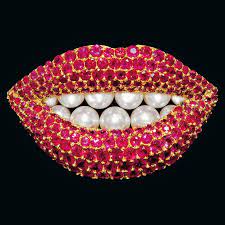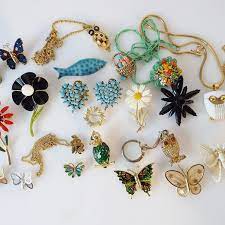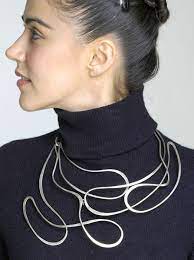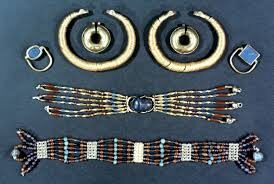One hundred years ago, it was hard to tell one piece of jewelry from another. Most didn’t have a clear background in any particular artistic movement. But starting around 1920, that all began to change. All of a sudden, artistic horizons opened up and began impacting how designers made rings, bracelets, brooches, and necklaces. Things would never be the same again.
In this post, we take a look at some of the major art movements from the 20th century you need to know about, and how they impacted jewelry for better and worse.
Surrealist Jewelry
 Surrealism was an avant-garde artistic movement that grew out of the First World War and was heavily influenced by Dadaism. It was deliberately outrageous and a form that people at the time believed could liberate them from unconscious aspects of the creative process.
Surrealism was an avant-garde artistic movement that grew out of the First World War and was heavily influenced by Dadaism. It was deliberately outrageous and a form that people at the time believed could liberate them from unconscious aspects of the creative process.
Major artists associated with the surrealist movement experimented with representing the movement in metalwork. Salvador Dali himself, for instance, made around 40 pieces, one of which was an Eye of Time brooch that went on sale at Sotheby’s in 2014 for a whopping $1 million. Other major names from the movement who dabbled in jewelry included Man Ray, Max Ernst, and Meret Oppenheimer.
Mid-Century Jewelry
 Mid-century wasn’t an academically defined movement in itself, but it did have a specific aesthetic of its own, thanks to the effects of the war and ravaged economy. It was supposed to be a new look that would restore the world after many decades of war and devastation from the start of the century. It was all going to be part of a fabulous new society.
Mid-century wasn’t an academically defined movement in itself, but it did have a specific aesthetic of its own, thanks to the effects of the war and ravaged economy. It was supposed to be a new look that would restore the world after many decades of war and devastation from the start of the century. It was all going to be part of a fabulous new society.
Jewelry from this time was old-worldly. Most items were clean, simplistic, and elegant. Jewelry houses that offered the aesthetic included Tiffany’s, Cartier, Boucheron, and Harry Winston. Today, you can buy claddagh rings online which have an Irish twist.
For every day, people would wear chunky gold brooches. Mid-century rings were bold and fanned the desire for cocktail rings that people could wear when they went out drinking and dancing.
Modernist Jewelry
The modernist movement actually preceded the 20th century, but general society didn’t start experiencing its effects until the 1910s.
The original art movement was supposed to be a rebellion against the machine-based Victorian era. People wanted to return to more natural forms – they were tired of smokestacks, pistons, and whirring gear mechanisms.
 The modernist jewelry from the era was an expression of creative freedom and artistic expression. Usually, it incorporated a large number of materials and artisans churned out units at low cost. It was the first type of jewelry accessible to the masses. The designer usually worked in a small design studio instead of a large factory and acted as both the designer and fabricator.
The modernist jewelry from the era was an expression of creative freedom and artistic expression. Usually, it incorporated a large number of materials and artisans churned out units at low cost. It was the first type of jewelry accessible to the masses. The designer usually worked in a small design studio instead of a large factory and acted as both the designer and fabricator.
Many examples of modernist jewelry look like twisted pieces of metal with stones studded into them. The shapes that they took were deliberately ambiguous, which is one of the reasons why they only appealed to upper-class women at first. Many pieces were also unisex.
Hey You! Don't Miss Out!

When you confirm your subscription, you'll get something special from me!
Enjoy, Ann


